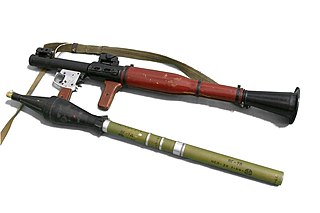
Ahmad Shah Massoud was an Afghan politician and military commander. He was a powerful guerilla commander during the resistance against the Soviet occupation between 1979 and 1989. In the 1990s he led the government's military wing against rival militias and, after the Taliban takeover, was the leading opposition commander against their regime, who he fought against until his assassination in 2001.
Mohammad Qasim Fahim, also known as "Marshal Fahim"; 1957 – 9 March 2014) was a politician in Afghanistan who served as Vice President from June 2002 until December 2004 and from November 2009 until his death. Between September 2001 and December 2004, he also served as Defense Minister under the Afghan Transitional Administration.

Panjshir is one of the thirty-four provinces of Afghanistan, located in the northeastern part of the country. The province is divided into seven districts and contains 512 villages. As of 2018, the population of Panjshir province is about 1,000,000. Bazarak serves as the provincial capital. A report says more than 700,000 people of Panjshir province living outside of this province, particularly located in Kabul city of Afghanistan.

Younus Qanooni is an Afghan politician who was Vice President of Afghanistan. An ethnic Tajik, Qanooni is the leader of the Afghanistan e Naween political party and former Speaker of the House of the People.
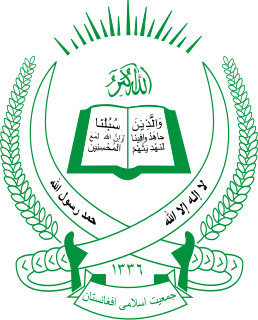
Jamayat-E-Islami, sometimes shortened to Jamiat, is a Muslim political party in Afghanistan. The oldest Muslim political party in Afghanistan, it was originally formed as a student political society at Kabul University. The majority of the party are ethnic Tajiks of northern and western Afghanistan. It has a communitarian ideology based on Islamic law. During the Soviet–Afghan War and the following Afghan Civil War against the communist government, Jamiat-e Islami was one of the most powerful of the mujahideen groups. Burhanuddin Rabbani led the party from 1968 to 2011, and served as President of the Islamic State of Afghanistan from 1992 to 2001.
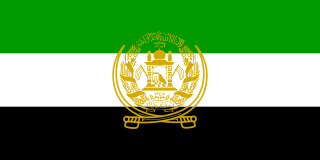
The Afghan Northern Alliance, officially known as the United Islamic Front for the Salvation of Afghanistan, was a united military front that came to formation in late 1996 after the Islamic Emirate of Afghanistan (Taliban) took over Kabul. The United Front was assembled by key leaders of the Islamic State of Afghanistan, particularly president Burhanuddin Rabbani and former Defense Minister Ahmad Shah Massoud. Initially it included mostly Tajiks but by 2000, leaders of other ethnic groups had joined the Northern Alliance. This included Abdul Rashid Dostum, Mohammad Mohaqiq, Abdul Qadir, Asif Mohseni and others.
Masoud Khalili, also Massoud Khalili and Masud Khalili is an Afghan diplomat, linguist and urbane poet. Khalili is the son of the famous Dari language and Afghan poet laureate, Ustad Khalilullah Khalili. In the war against the Soviets from 1980 to 1990, he was the political head of the Jamiat-i-Islami Party of Afghanistan and close advisor to Commander Ahmad Shah Masood. In the internal conflict that followed, he chose to be the Special Envoy in Pakistan to President Burhannudin Rabbani. Deported from the same country for his high rank in the Northern Alliance, he went to New Delhi in 1996 as the Ambassador of the Afghanistan (Anti-Taliban) where he stayed for many years. He was non-resident Ambassador to Sri Lanka and Nepal at the same time.
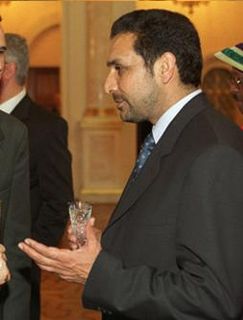
Ahmad Zia Massoud was the Vice President of Afghanistan in the first elected administration of President Hamid Karzai, from December 2004 to November 2009. He is a younger brother of the late Ahmad Shah Massoud, the resistance leader against the Soviet invasion of Afghanistan and against the Taliban. In late 2011, Ahmad Zia Massoud joined hands with major leaders in the National Front of Afghanistan, which strongly opposes a return of the Taliban to power. The National Front is generally regarded as a reformation of the United Front which with U.S. air support removed the Taliban from power in late 2001.

This article covers the Afghan history from the Soviet withdrawal from Afghanistan on 15 February 1989 until 27 April 1992, the day after the proclamation of the Peshawar Accords proclaiming a new interim Afghan government which was supposed to start serving on 28 April 1992.

This article covers a part of the contemporary Afghan history that started between 28 April 1992, the day that a new interim Afghan government was supposed to replace the Republic of Afghanistan of President Mohammad Najibullah, and the Taliban's conquest of Kabul establishing the Islamic Emirate of Afghanistan on 27 September 1996.

This article covers the Afghan history between the Taliban's conquest of Kabul and their establishing of the Islamic Emirate of Afghanistan on 27 September 1996, and the U.S. and U.K. invasion of Afghanistan on 7 October 2001: a period that was part of the Afghan civil war that had started in 1989, and also part of the war in Afghanistan that had started in 1978.

The Panjshir offensives were a series of battles between the Soviet Army and groups of Afghan Mujahideen under Ahmad Shah Massoud for the control of the strategic Panjshir Valley, during the Soviet–Afghan War in the period from 1980 to 1985.
The Afshar Operation was a military operation in Afghanistan that took place on February 11-12, 1993 during the Afghan Civil War (1992-96). The operation was launched by Ahmad Shah Massoud and Burhanuddin Rabbani's Islamic State of Afghanistan government and the allied Abdul Rasul Sayyaf's Ittehad-i Islami paramilitary forces against Gulbuddin Hekmatyar's Hezbe Islami and Abdul Ali Mazari's Hezbe Wahdat militias in the densely populated Afshar district in west Kabul. The Hazara-Hezbe Wahdat together with the Pashtun-Hezbe Islami of Hekmatyar had been shelling densely populated areas in northern Kabul from their positions in Afshar, killing thousands. To counter the shelling, government forces attacked Afshar in order to capture the positions of Wahdat and its leader Mazari, and to consolidate parts of the city controlled by the government.

Battle of Kabul refers to a series of intermittent battles and sieges over the city of Kabul during the period of 1992–1996.
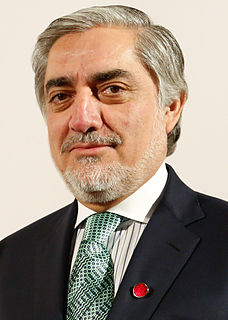
Abdullah Abdullah is an Afghan politician, serving as Chief Executive of the Islamic Republic of Afghanistan since September 2014. From October 2001 to April 2005, he served as Minister of Foreign Affairs. Prior to that he was a senior member of the Northern Alliance working as an adviser to Ahmad Shah Massoud. He also worked as a medical doctor during the late 1990s.
Baba Jalandar Panjshiri was a commander of Jamiat-e Islami during the Soviet invasion of Afghanistan and Civil War in Afghanistan. He was one of the senior commanders of Ahmed Shah Massoud and participated in the fighting that took place in Kabul from 1992–1996 between Government forces and militia of Gulbuddin Hekmatyar and Hezbe wahdat to control the capital, Along with Gul Haidar he took 3 month rotations in charge of the artillery located on top T.V. Mountain in Kabul against the opposition offensive toward Kabul. Units under his command were also involved in the Afshar Operation according to a Human Rights Watch report. The same report also stated that he commanded a brigade into Afshar during the assault.

The Shura-e Nazar was created by Ahmad Shah Massoud in 1984 at the northern provinces of Takhar, Badakhshan, Balkh and Kunduz, during the Soviet-Afghan War. It comprised and united about 130 resistance commanders from 12 northern, eastern and central regions of Afghanistan. Though operating autonomously, Shura-e Nazar was technically an offshoot of Rabbani's Jamiat-e Islami and hence operated within the framework of the Peshawar Seven against the Soviet-supported Democratic Republic of Afghanistan.

The Afghanistan conflict is a series of wars that has been fought in Afghanistan since 1978. Starting with the Saur Revolution military coup, an almost continuous series of armed conflicts has dominated and afflicted Afghanistan. The wars include:





